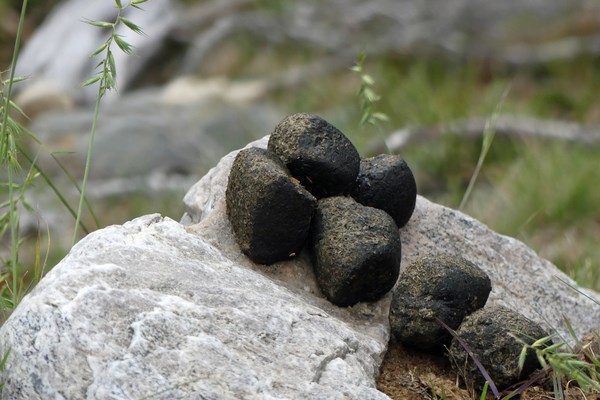Why does wombat make cube-shaped poop? A real headache for scientists, who have been investigating this more unique than rare aspect of the animal world for years. But a new study may have revealed the secret of these little marsupials.
He is about to end up run over, his mother saves himWhy does wombat make cube-shaped poop? A real headache for scientists, who have been investigating this more unique than rare aspect of the animal world for years. But a new study may have revealed the secret of these little marsupials.
The Australian wombat has one of nature's weirdest superpowers. It is the only animal known to us capable of producing cube-shaped poop. It seems trivial but it is not. So far there have been many hypotheses. The biologists had partially attributed the shape to the incredible dryness of the feces also seen the place where they live.
But the new research goes further. This time, wombats were not studied by biologists but by a team of fluid dynamics experts from the Georgia Institute of Technology. At the head of the research group Patricia Yang:
“The first thing that prompted me to do this was that I had never seen anything so strange in biology: it was a mystery. I didn't even believe it was true in the beginning. I googled and saw a lot about the cube-shaped wombat poop, but I was skeptical. "
There was only one way to find out: together with his colleague, mechanical engineer David Hu, Yang traveled to Australia to admire these evocative “creations” up close.

They found that the stool was compressed to the characteristic square shape just before it was expelled. But not only. About 8% of the wombat's gut works to produce these cubs. Once made, the shape is maintained even after being pushed through the anus, which is commonly round.
According to the two researchers, to give the typical well-defined shape would be changes in the elasticity of the intestinal walls of the wombat. The less elastic and more rigid parts of the intestine are responsible for the edges. Another element must also be added. These animals are herbivores, they live in very arid areas, which is why their droppings are dry and compact, keeping their shape even after being expelled.
Cubic structures are rare in biology because flat surfaces and sharp angles require a lot of extra energy. The discovery can be useful for both biology and mechanical engineering.
"At the moment we only have two methods of making cubes: we shape them or cut them, now we have this third method", explains Yang
According to other hypotheses, the cubic shapes would allow the wombat to build a sort of feces enclosure around the borders of its territory, or it is thought that they have poor eyesight and therefore need to place their excrements at the level of the nose because the their fellows smell it. Unlike a cylinder, which would roll over any surface, a cube stays firmer.
However Mike Swinbourne, wombat expert at the University of Adelaide in Australia, has explained to National Geographic that this is a misunderstanding. Stools are dry due to the arid habitats in which wombats live.
“They really have to squeeze every drop of moisture out of their food,” Swinbourne explained.
Wombats have fewer secrets, and so does their poop.
The study was presented to the 71st annual meeting of the APS fluid dynamics division.
READ also:
- Wombat, 10 things you (maybe) didn't know
- The tender and relaxing video of the wombat taking an oatmeal bath
Francesca Mancuso


























